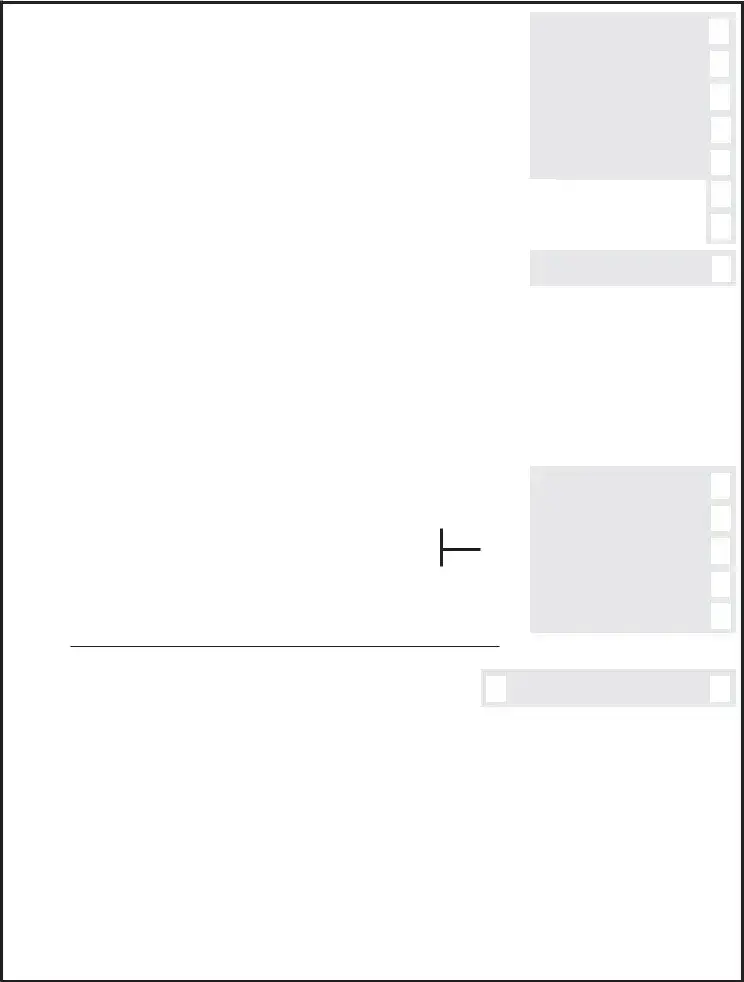The IRS Form 1040, U.S. Individual Income Tax Return, is quite similar to the Tennessee BUS 415 form in that both forms are used to report income and calculate taxes owed to the government. Just like the BUS 415 form requires business owners to report gross sales, deductions, and the total tax due, the Form 1040 requires individuals to report their income, deductions, and the tax they owe or the refund they are entitled to receive. Both forms also require the taxpayer's identification number, which can be a Social Security Number for individuals or a Federal Employer Identification Number for businesses.
Another document that aligns with the Tennessee BUS 415 form is the IRS Form 1120, which is the U.S. Corporation Income Tax Return. This form is used by corporations to report their incomes, gains, losses, deductions, and to calculate their federal income tax liability. Similar to the BUS 415, Form 1120 includes sections for reporting total income and allowable deductions which determine the net taxable income and subsequent tax owed to the IRS.
The Schedule C (Form 1040), Profit or Loss from Business, shares similarities with the BUS 415 form as well. Used by sole proprietors to report the income or loss from a business they operated or a profession they practiced, Schedule C includes the reporting of gross receipts, expenses, and the calculation of the net profit or loss from the business. Like the BUS 415 form, it affects a taxpayer’s overall tax liability and requires detailed financial information.
Form 941, Employer's Quarterly Federal Tax Return, although primarily focusing on payroll taxes, bears resemblance to the BUS 415 form in its function of reporting to a government agency. Form 941 is used by employers to report income taxes, social security tax, or Medicare tax withheld from employees' paychecks and also reports the employer's portion of social security or Medicare tax. While BUS 415 focuses on business taxes, both forms serve to calculate and report taxes owed to federal or state authorities.
The State Unemployment Tax Act (SUTA) filings, while specific to unemployment insurance, are analogous to the BUS 415 form because both involve reporting financial information that affects tax liability. Businesses file SUTA reports to state agencies, detailing wages paid to employees to determine the employer’s unemployment tax rate. Like the BUS 415, these filings are essential for compliance with tax obligations and affect the financial operations of a business.
IRS Form 1065, U.S. Return of Partnership Income, parallels the BUS 415 form in its purpose of reporting income, deductions, and taxes owed, but does so for partnerships. This form collects information about a partnership’s financial activities over the year and is used to assess the total tax liability the partnership faces. Both forms require detailed accounting of business activities and directly impact the taxation process.
The IRS Form 990, Return of Organization Exempt from Income Tax, shares a common goal with the BUS 415 form in terms of reporting financial activities, albeit for a different audience. Form 990 is filed by nonprofits to provide the IRS with information on their operations, including revenue and expenses. This form ensures that organizations adhere to the laws governing tax-exempt status, similar to how the BUS 415 ensures businesses comply with state business tax laws.
The U.S. Customs and Border Protection Form 7501, Entry Summary, also shares similarities with the BUS 415 form in its role in calculating taxes payable to the government, but in the context of importing goods into the United States. It requires detailed descriptions of the merchandise, its value, and the applicable duty rate to calculate the amount of duty owed. Just as the BUS 415 entails the reporting of in-state business operations and the resulting tax, Form 7501 focuses on the importation process and its associated taxes.
The Sales and Use Tax Return, which varies by state, is inherently similar to the BUS 415 form as they both deal with the taxation of business transactions. These forms require businesses to report the total sales made within a specific period, the amount of tax collected from customers, and calculate the tax due to the state. Like the BUS 415, the Sales and Use Tax Return plays a crucial role in fulfilling a business's tax obligations.
Lastly, the Annual Report filed with the Secretary of State, required by many states for registered businesses, although not a tax document, contains elements akin to the BUS 415 form. This report often includes information about the business’s operations, management, and location. While its primary purpose is to keep the public record updated, it shares the commonality of reporting business specifics, crucial for regulatory compliance and taxation purposes, similar to what BUS 415 demands for local tax obligations.






 .00
.00










































 .00
.00





 .00
.00





 .00
.00





 .00
.00





 .00
.00




 .00
.00




 .00
.00





 .00
.00





 .00
.00





 .00
.00





 .00
.00





 .00
.00





 .00
.00






 .00
.00